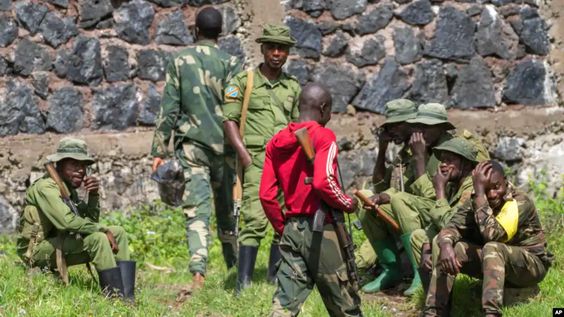Africa
Despite a truce, M23 Rebels Continue to Fight in Eastern DRC

As a cease-fire went into effect on Friday, civilian and military sources reported that M23 rebels were still engaged in combat and making progress on one front of their advance in the eastern Democratic Republic of the Congo.
After the 1700 GMT deadline to end hostilities, fighting resumed close to Bwiza, about 40 kilometers north of the province seat, Goma, locals said AFP by phone.
An administrative source reported that M23 was in Bwiza and that the rebels had seized control of numerous other communities.
The report could not be independently verified by AFP.
Former Congolese Tutsi rebel commander Laurent Nkunda had his headquarters in Bwiza throughout the 2000s.
In Bambo, 70 kilometers from Goma, fighting also broke out during the day between the M23 and a Hutu militia.
“There is the sound of heavy weaponry. People are panicking, “a representative of civic society told AFP.
Fighting between the M23 and members of the Democratic Forces for the Liberation of Rwanda (FDLR), a Hutu group that has been active in the DRC since the 1994 murder of Tutsis in Rwanda, was verified by a security source.
As night fell, Bambo appeared to be once again peaceful.
Twenty kilometers north of Goma, on National Highway 2, a front line that has evolved during the past two weeks near the hamlet of Kibumba, the situation looked to be more calm.
In a meeting on Wednesday in Angola, President Felix Tshisekedi of the DRC and Vincent Biruta, the foreign minister of Rwanda, reached an agreement for a truce in the eastern DRC that will begin on Friday night local time.
M23 rebels were instructed to leave “occupied zones,” and if they failed to do so, a regional army from East Africa would step in.
The mostly Congolese Tutsi militia that makes up the rebels, however, stated on Thursday that the cease-fire “doesn’t really interest us” and demanded direct negotiations with the DRC’s government.
A spokesman for the rebels stated, “Usually when there is a cease-fire it is between the two fighting factions.
The M23’s president, Bertrand Bisimwa, released a statement in English on Friday in which he said that his organization “accepts the cease-fire as suggested” by the Luanda meeting.
But he made a call to Kinshasa “observing stated cease-fire
The M23 reserves the right to fully defend itself in all such circumstances.”
The March 23 organization had been idle for years before picking up their weapons once more in late 2016.
The DRC charges Rwanda with aiding the rebels, which Kigali refutes.
Goma, a city of one million people that the rebels temporarily took control of ten years ago, is located in hilly Rutshuru region that has just come under attack.
As long be the M23 is occupying territory in the DRC, Kinshasa has refused to negotiate with what it refers to as a terrorist organization.
The M23 is only one of the several armed factions that have made eastern DRC one of the most deadly parts of Africa.
These armed organizations are a result of two wars that occurred around the turn of the century and drew nations from the area while killing millions of people.
AFP
